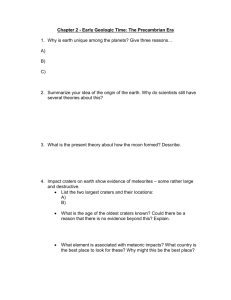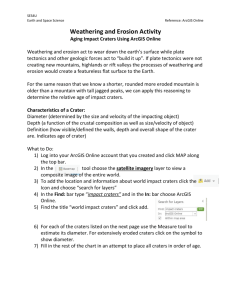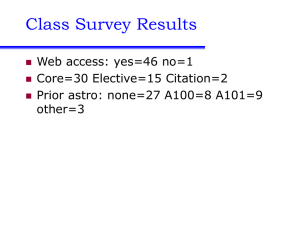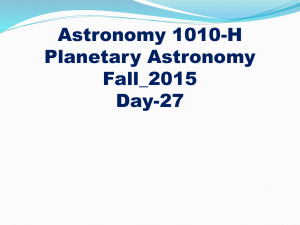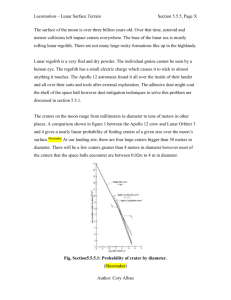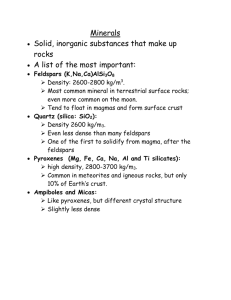Practice Test Questions
advertisement
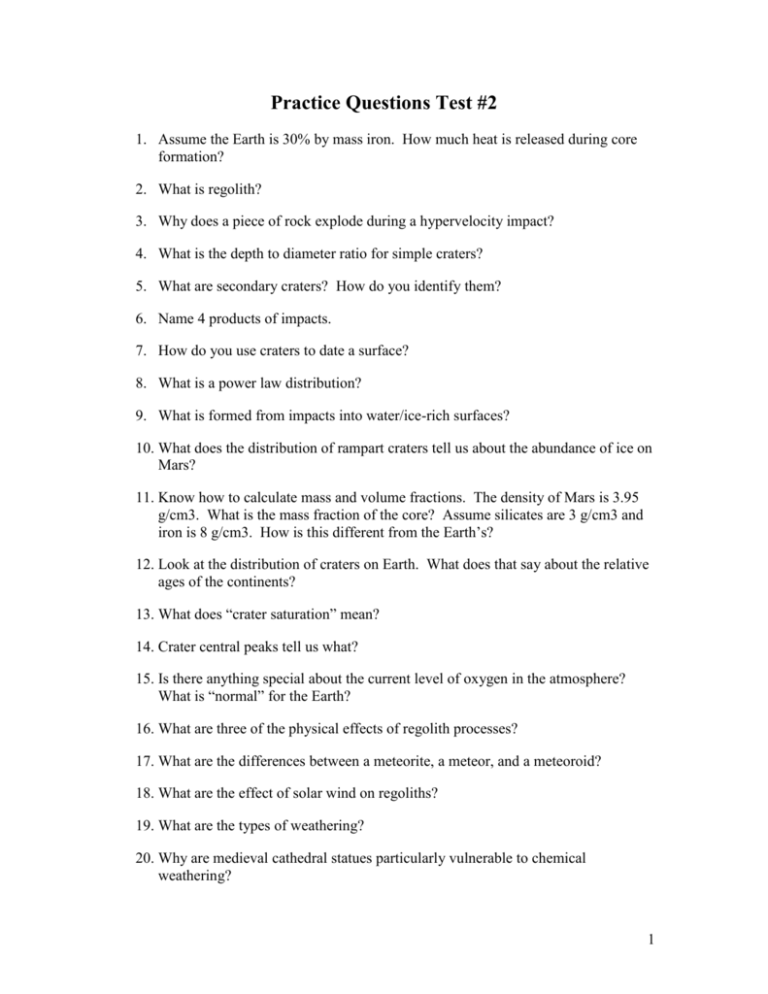
Practice Questions Test #2 1. Assume the Earth is 30% by mass iron. How much heat is released during core formation? 2. What is regolith? 3. Why does a piece of rock explode during a hypervelocity impact? 4. What is the depth to diameter ratio for simple craters? 5. What are secondary craters? How do you identify them? 6. Name 4 products of impacts. 7. How do you use craters to date a surface? 8. What is a power law distribution? 9. What is formed from impacts into water/ice-rich surfaces? 10. What does the distribution of rampart craters tell us about the abundance of ice on Mars? 11. Know how to calculate mass and volume fractions. The density of Mars is 3.95 g/cm3. What is the mass fraction of the core? Assume silicates are 3 g/cm3 and iron is 8 g/cm3. How is this different from the Earth’s? 12. Look at the distribution of craters on Earth. What does that say about the relative ages of the continents? 13. What does “crater saturation” mean? 14. Crater central peaks tell us what? 15. Is there anything special about the current level of oxygen in the atmosphere? What is “normal” for the Earth? 16. What are three of the physical effects of regolith processes? 17. What are the differences between a meteorite, a meteor, and a meteoroid? 18. What are the effect of solar wind on regoliths? 19. What are the types of weathering? 20. Why are medieval cathedral statues particularly vulnerable to chemical weathering? 1 21. Polygonal ground indicates what? 22. Where would thermal stress have the maximum effect? 23. Give examples of the most stable and least stable minerals? What formation conditions produce the most stable minerals? 24. What is the weathering style in asteroids? 25. What transport mechanism produces well sorted sediment? Poorly sorted sediment? 26. Why are beaches composed of mostly rounded quartz sand? 27. What is the physical effect of long fluvial transport on rocks? 28. What is a graded bed? 29. What are the factors that influence mass movement? 30. What is the angle of repose? 31. Large angular blocks indicate what kind of flow? 32. What are two ways of making sediments into coherent rocks during diagenesis? 33. What are the symptoms of altitude sickness? 34. What is the placer model for deposition of gold in South Africa? 35. What are three rock types that can help identify impact craters? 36. Look at the distribution of craters on Earth. What does that say about the relative ages of the continents? 37. Discuss flood basalts on the Moon and Earth. 38. How was the lunar crust created? 39. How was the lunar magma ocean like the Palisades sill in New Jersey? 40. Rilles are? 41. Where are most earthquakes and volcanoes on Earth and why? 42. How does continental crust accumulate on Earth? 43. Are continents rifting apart now? 2 44. Discuss the process of hot-spot volcanism and how that relates to the construction of Olympus Mons. 45. What are hotspots? Do they migrate? Why? 46. How is continental crust generated? 47. What are granites and how are they different from basalts and rhyolites? What is the chemical difference between gabbro and basalt? Rhyolite and granite? 48. What does boudinage indicate? 49. What is a diaper? 50. Grabens indicate what kind of crustal stress? 51. What is the difference between a scientific law and a theory? 52. What are the characteristics of an effusive eruption? Where do you find them? 53. What are the characteristics of a plinian eruption? Where do you find them? 54. What is a pyroclastic flow? 55. What is intrusive volcanism? How much more abundant is tis than extrusive volcanism? 56. What is bingham yield stress? 57. What is a solid solution? A polymorph? 58. What is a liquidus and a solidus? 59. Why did Lord Kelvin get the age of the Earth wrong? What was Perry’s idea? 60. What is the effect of pressure and volatile content on melt generation? What happens to melt viscosity with more dissolved H2O? 61. What is the geotherm? 3
